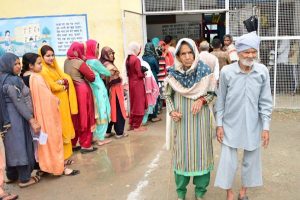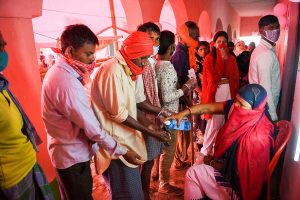Way back in 2006, years before we witnessed the National Award-winning Sohoj Paather Golpo, filmmaker Dhananjoy Mandal had made a 75- minute feature film on the same story by Bibhuti Bhushan Bandopadhyay carrying the original name Talnabami.
Sadly, due to lack of marketing and promotional opportunities, the general public could never get to watch this film except at invited screenings in Nandan and some other venues. But the film bagged the FIPRESCI Award (International Critic Award) winner at the 9th Zanzibar International Film Festival, Tanzania, and was part of the official selection at not less than 15 International Film Festivals.
The jury composed of renowned critics from France, Egypt, Turkey, Russia and Burkina Faso, singled out Talnabami as “an example of high cinematographic quality achieved with an extremely low budget … the poetic treatment of the Bengali film will not only touch film critics but also a larger audience”.
His documentary The Silent Killers on arsenic poisoning won the National Award for best Investigating Film and three International Awards are “Special Prize of Jury”International Environmental Festival. “Green Vision”, Russia “Diploma of Honor”, Roshd International Festival, Iran, and Best Documentary and UNESCO Diploma in Minsk Int Environmental Film Festival, Belarus.
This is to draw attention to Taalnabami which few may have had the fortune of seeing while Sahaj Paather Golpowas luckier in being distributed across theatres around West Bengal and also getting the National Award for the two child actors who did so well in the film. This is a subtle pointer to how a very good film can be “killed” for lack of proper distribution and exhibition facilities just because the maker does not have the means to do so.
You can easily miss Mandal in a crowd of ten. He is the most self-effacing filmmaker I have ever met. His next feature film Mela also did not get a proper release. Another telefilm Dewaal, a touching social comment on the sanctity of marriage and on social morals went unnoticed and occasionally resurfaces on the channel as a filler.
The self-taught Mandal said, “I made it on an incredible budget of Rs 4 lakh and it bagged an award amidst films made on budgets running to crores of rupees.” He has no godfather, he has no network of people who can help him out, and he is very bad at public relations. He is completely self-trained and has never been to any film school. But his work speaks for him and he is better at it than many others. The Alexandria International film festival, Cairo, Egypt, had also invited Talnabami for screening in September 2006. The film had already participated in International Film Festivals at Iran, Netherlands and Greece and five other festivals in India.
Ever since Satyajit Ray made his historic debut in world cinema with his trilogy based on the works of Bibhutibhusan Bandopadhyay, few filmmakers have ventured into the area of literature produced by Bandopadhyay. Though, by Ray’s own admission, Bandopadhyay’s works are so filled with visual description that most of them can smoothly slide into the medium of film.
Ray went on to make another film based on another Bandopadhyay classic -Asani Sanket – this time in colour. Finally, it remained for young Mandal to make a short film – his first – on a short story for children penned by Bandopadhyay called Talnabami. The story revolves around two brothers, Gopal and Nepal, belonging to a very poor family of a Brahmin priest, who pin their hopes on being invited to a feast at the house of their affluent aunt who lives in the same village.
The feast is in celebration of the season of the palm fruit, which falls on Nabami day during the monsoon. They live a life of near-starvation but the mother tries to do her best in the given circumstances to keep them happy. There is a moving scene where the mother dishes out some paayesh she has prepared for the boys from the palm fruit they have collected and a little rice their father has brought in. They lick up their plates and the husband praises her cooking when she says, “If only I could add a bit of milk and coconut to the paayesh.” Imagine making kheer without the basic ingredient – milk! But they all take it as a part of life that underscores the tragic irony of their lives.
The feast is an annual affair when the entire village is invited to enjoy a grand lunch. While one of them picks palm fruits from the neighbourhood to be sold to the same aunt the other dissuades him in fear that this might stop them from being invited. The day of reckoning arrives and the boys wait to be invited. As they sit and watch the villagers flocking in groups to the feast, they finally come to terms that their dream of the invitation will never be realised. Mandal does not capitalise on the tragedy of poverty. He tells a story of simple people who lived in a simple village that could quite easily be a microcosm of any village in India distanced somewhat by language and custom.
He remains absolutely loyal to Bandopadhyay’s original story. The climate and the landscape bear a close resemblance to Boral, the village that formed the backdrop of Pather Panchali where Bandopadhyay lived all his life. “Since Boral is now a developed township, I had to go location hunting to look for the right backdrop for the film,” he said. His efforts seem to have borne fruit and the mushy landscape with the white kaash forests across the horizon takes one back on a trip to Pather Panchali.
Mandal has made imaginative use of the backdrop and the landscape of rural Bengal so that it blends into the incidents and the characters of the film. The kaash flowers swaying away in the breeze might remind us of Pather Panchali, “It is my way of paying a humble tribute to the two great masters —Bibhuti Bhushan and Satyajit Ray who inspired my first film,” he says. Shot brilliantly in colour (Samir Debnath), the rains in the village where both adults and children are oblivious to the city-bred’s constant fear of getting drenched are frozen in time.
Manik Bhattacharya’s production design brings alive the thatched hut in which the boys live and their mother cooks as well as it juxtaposes the affluence of Joti aunty’s spacious home with a garden thrown in and a guava tree. All the actors shine with natural and spontaneous performances. Sunil Mukherjee as Khudiram, the boys’ father, Sreela Majumdar as Giribala, their mother, Saurabh Das as Gopal and Suparna Bhattacharya as Nepal never once appear artificial either in their make-up and costume or in their performance.
The dream scene is superfluous and does not quite belong. Talnabami is not just a film with a simple story. It is also a scathing attack on our social system where even close family ties break under the pressure of unequal situations of economic power even when such inequality, specially in rural India, is circumstantial and in some way, a tragedy of destiny.











